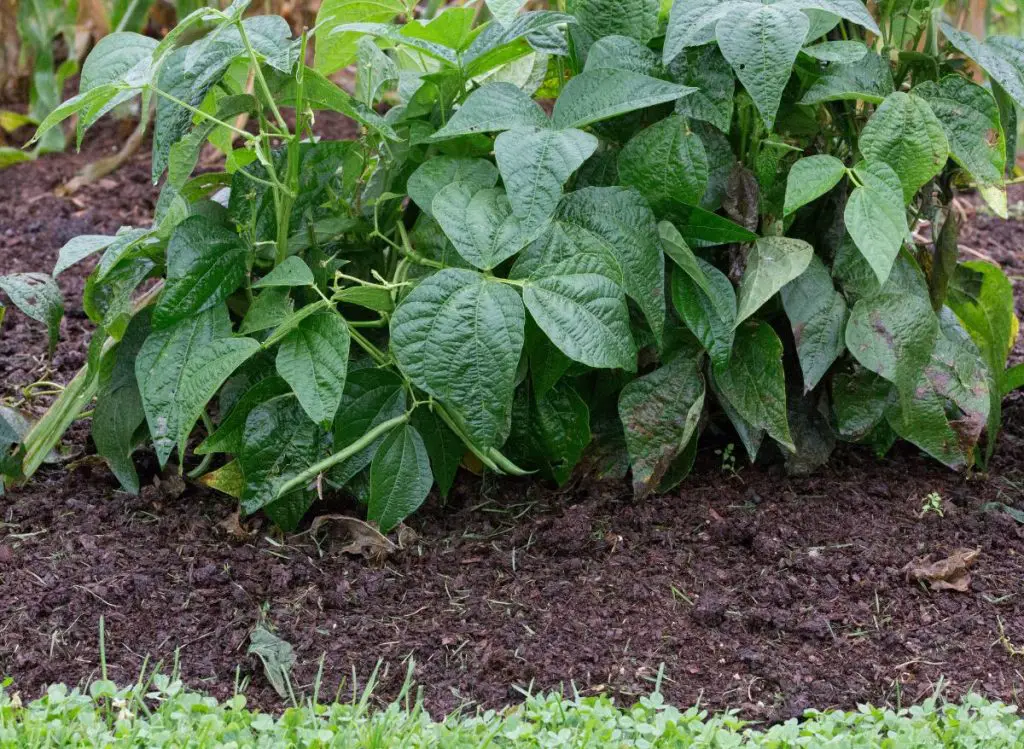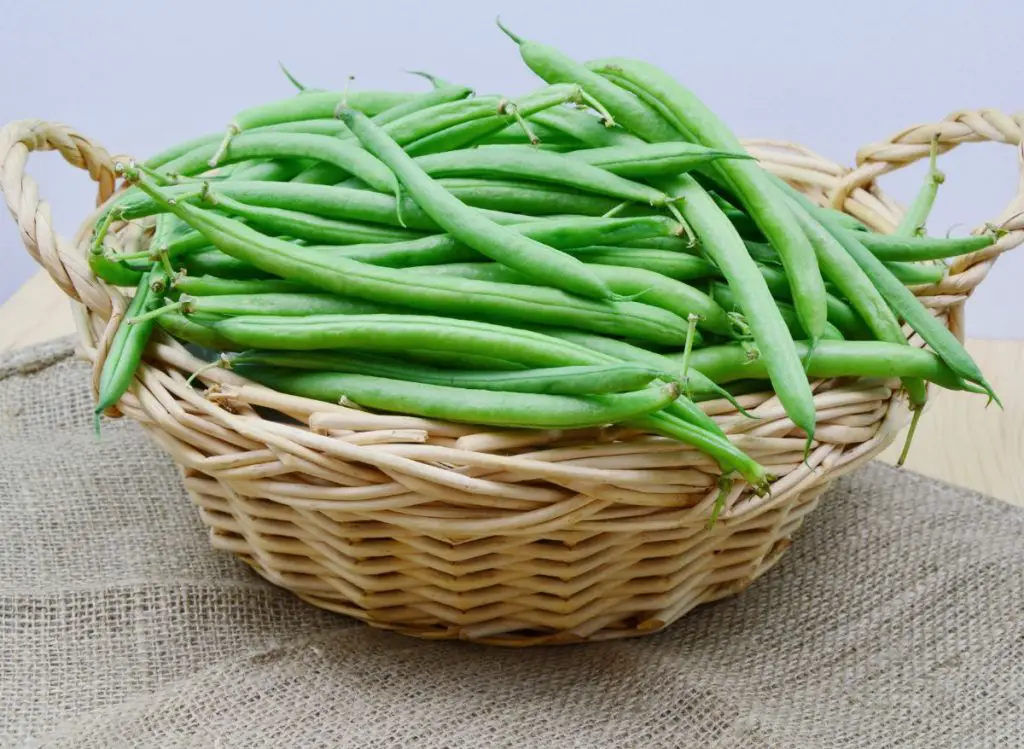
Green beans are one of the most popular types of beans that people grow in their home gardens. They are often grown on bushes but also come in pole bean varieties.
It’s not only the taste that makes bush beans so popular; it’s also the fact they do not need a trellis. They are easier to maintain than their cousins, which grow on long vines and are able to be grown in smaller spaces.
So, do bush beans need a trellis? Generally, bush beans don’t require a trellis or any other support to thrive. Bush beans typically grow to about 2 feet tall, making them suitable for smaller garden beds, including raised beds, where their small footprint doesn’t require too much space.
Green beans, also known as string beans and snap beans, are not the only bush beans that can be grown in the home garden.
There are hundreds of cultivars, and the only way you will know which ones grow best in your garden and which ones your family will eat the best is to plant and grow a few different varieties.
Check out some of these easy-to-grow bush bean varieties that do not need a trellis.
If you are considering starting green beans indoors, I wrote a whole article about everything you need to know.
Does Bush Beans Need a Trellis?
Bush beans don’t typically require support, including a trellis, because they will grow actively about two feet tall and two feet wide. Generally, bush beans are among the easier garden crops to grow as they don’t require staking, and as long as they receive sufficient sunshine, they usually produce an abundant harvest.
Size Of Plant
Most bush bean varieties will grow into a mature bush that reaches 2-3 feet across and 2-3 feet tall. Some plants will only be 18 inches tall when mature, and some may reach 4 feet tall and wide.
Be sure to read the seed labels so you will know the mature plant size and allow enough space for plants to grow at seed planting time.
Ideal For Containers
Since bush beans develop into small bushes and do not need a trellis for support, they are ideal for growing in containers. Container gardens on the balcony, porch, deck, rooftop or any other small space can successfully grow bush beans.
A container that is at least 1 foot deep and 1 foot across is sufficient to grow one bush bean plant. Minimal vertical space is needed for these bushes since they won’t grow over 4 feet in height, with some bushes being much shorter when mature.
Harvest Time
Most bush bean varieties will ripen the beans all at the same time over a two-week period. This is ideal for gardeners who want to preserve some of their bean harvests to eat later in the year.
If you don’t want to preserve any of the bean harvest, stagger plant the bushes. Plant bush bean seeds every two weeks so the harvest will come in at staggered intervals during the summer.
Bush beans can be preserved through canning, freezing, or drying. Drying can be done with shelled beans of beans left in their hulls. Shell dried beans can be stored in air-tight containers and are cooked like any other type of dried beans.
Green beans have a unique way of being preserved that other beans don’t cater to. Green beans can be dried in the hull and re-hydrated, tasting very close to the fresh version.
Mature green beans are strung up to dry by using a needle and thick thread to create a string of beans. These strings are known as ‘Leather Britches’. Once dried, the Leather Britches can be stored, string and all, in a jar or bag until you are ready to cook them.
To rehydrate them, just cook the desired amount the same way you would cook fresh green beans.
Types And Sizes
Bush beans thrive when planted near each other. In some cases, you might need to add light support, particularly when they bear fruit.
Bush beans produce a large harvest over a relatively short period, usually about 3 to 4 weeks, making them excellent for gardeners who like to can and freeze.
1- Big Kahuna
This bush bean variety produces huge beans on a small plant. The tasty green bean pods will reach 11-12 inches in length, and the plant will be 24 inches when mature. The Big Kahuna is an abundant producer, and the huge beans will hang in clusters on the bush.
Ideal for container growing, the beans will be ready to harvest in 55 days.
2- Jade
Here’s an heirloom bush bean that is open-pollinated, cold-hardy, heat-resistant, stress-resistant, and produces abundantly.
The bush grows upright and will be 2 feet tall when mature. The bean pods are slim, crisp, tender, and 7 inches long when mature. Jade beans are ready to harvest in under 60 days from seed planting.
3- Porch Pick
As the name of this bush bean variety indicates, this variety is ideal for growing in containers on the porch.
The compact bush will reach a mature height of 18-inches and produce an abundant harvest of crisp green bean pods that are 5-inches long.
Porch Pick bush beans will go from seed time to harvest time in 55 days.
4- Tendergreen
This is an all-purpose green bean that is perfect for eating fresh, canning, or freezing. Tendergreen is an open-pollinated, heirloom variety that produces flavorful 6-inch pods of crisp green beans.
The green beans will be ready to harvest 60 days after planting the seeds. The bush will be around 2 feet tall when mature and disease-resistant.
5- Stringless Green Pod
Try growing this stringless variety if you hate removing the strings from fresh green beans. Stringless Green Pod beans are ready to harvest 50 days after planting the seed. It is an open-pollinated heirloom variety that will produce an abundance of 5-inch long bean pods.
The bush is very short, reaching only 12 inches tall when mature. The hardy bush is heat tolerant and resistant to common diseases.
Other stringless bush bean varieties include Strike, Landreth, Tenderette, and Tenderpod.
6- White Half Runners
This green bean variety is halfway between a bush bean and a pole bean. The bush is slightly taller than most other varieties, reaching 4-5 feet when mature.
White Half Runners are heavy producers, and the stringless green beans are ready to harvest 60 days after planting the seeds.
This variety is open-pollinated, easy to grow, and thrives in warm climates. The bush is drought-tolerant and disease resistant.
7- Kidney, Black, Pinto, And Broad Beans Are Bush Varieties
Check mature bush size to ensure you have plenty of room for mature plants. Most of these bean varieties will grow on bushes that will mature into 4-5 feet tall plants.
The bushes have upright growing habits and will not need a trellis. The upright bushes also make harvesting the beans very easy.
All the bushes will produce small blooms before the beans emerge. These blooms are pretty to look at and attract a wide array of pollinators.
You can enjoy growing food for your family and help keep the pollinator population healthy by growing beans.

Ideal For Small Gardens
Gardening has increased in popularity in the last few years, partially out of necessity and partially from the desire to become more self-sufficient.
The only obstacle to meeting the desire to grow food is having the space in which to do so. Bush varieties of vegetables, like bush beans, enable people to grow food in small places.
Just 2-3 bush bean plants can produce enough fresh beans to supplement a family meal for several days.
If you plant the bean seeds in two-week intervals (stagger plant), you can increase the bean harvest time and enjoy fresh green beans throughout the summer.
Container-grown bush beans also appreciate a little shade in the afternoon’s heat, so a full-sun location is not needed for an abundant harvest.
A porch, patio, balcony, or window boxes receiving direct morning sun and shade in the afternoon are ideal for growing most of these bush bean varieties.
How To Grow Bush Beans?
- Bean seeds generally won’t germinate well in cold soil; I suggest you wait until the soil has warmed up to around 60 degrees.
- For optimal results, sow bush beans’ seed 1 inch (2.54 cm) deep and 2 inches (5.08 cm) apart in rows 18 to 24 inches (45.72 to 60.96 cm) apart after the last frost date.
- Once bush beans start doing well, thin them to 6 inches (15.24cm).
- Avoid using too much fertilizer, or a fertilizer rich in nitrogen can also result in a reduced pod set.
- Generally, applying an organic tomato fertilizer into your soil is best before planting at a rate of one cup per 10 feet.
- Avoid planting beans (or peas) with onions or garlic in a plot where you grew onion family members the previous year. Onion-family plants exude a substance that impedes the growth of plants in the bean family.
- Remember, beans have shallow-rooted; I suggest you cover the roots with compost or straw to slow evaporation and ensure water daily in scorching weather.
- Bush beans are predominantly warm-season crops that thrive at average temperatures between 60 and 75 ºF (Source: Clemson University)
- Weed control is critical, particularly in the first six weeks after planting your bush beans. It is recommended to use hand pulling to remove unwanted weeds.
- To encourage better root system development, Clemson University suggests watering sufficiently to moisten the soil to a deepness of about 6 inches (15.24 cm)
Should You Prune Bush Bean Plants?
Generally, bush bean plants do not need to be pruned. However, I encourage you to remove any damaged or discolored leaves.
You might wonder how tall do bush beans get? Typically, bush beans can grow up to two feet tall. The reason bush beans can be tall is that too little sunlight and high-nitrogen soil can contribute to creating tall plants.
Wrapping Up
Typically bush beans do not need a trellis. They grow to two feet tall and two feet wide and are excellent for both experienced and beginner gardeners.
Just remember that bush beans can be sensitive to various plant diseases, such as anthracnose, powdery mildew, and mosaic virus.
What to read next:

